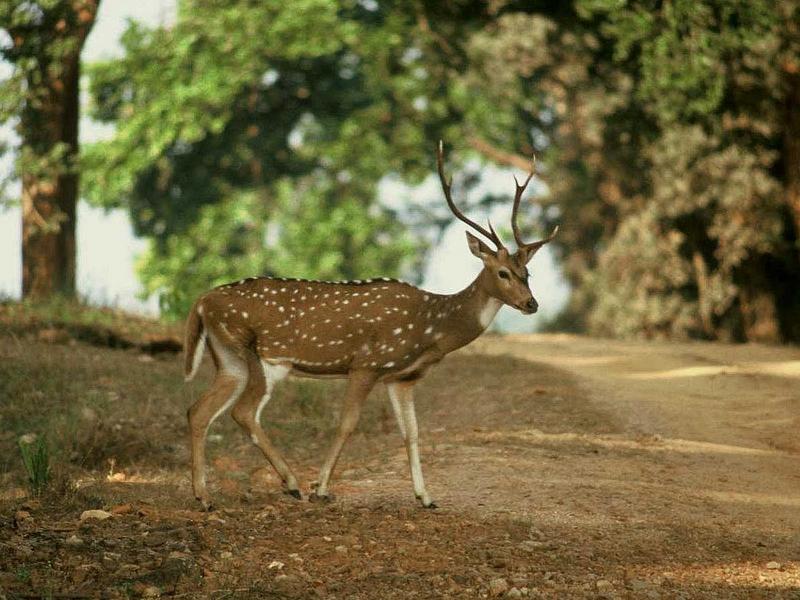|
| Query: Cervus axis | Result: 21st of 28 | |
Chital (Axis axis) - wiki
| Subject: | Chital (Axis axis) - wiki
| |

| Resolution: 1200x900
File Size: 174353 Bytes
Upload Date: 2007:08:20 11:25:42
|
ERROR : Server Busy(-1105)
ERROR : Server Busy(-1105)
Chital (Axis axis) - wiki
Chital
From Wikipedia, the free encyclopedia
[Photo] Spotted deer (Axis axis) at Kanha National Park, India. Date Sept. 2005. Author Altaipanther http://commons.wikimedia.org/wiki/User:Altaipanther
The chital (or cheetal) deer, also known as the spotted deer or axis deer is a deer which commonly inhabits wooded regions of Sri Lanka, Nepal, Bangladesh, and most of India. It is the most common deer species in Indian forests. Its coat is reddish fawn, marked with white spots, and its underparts are white. Its antlers, which it sheds annually, are usually three-pronged and curve in a lyre shape and may extend to 75 cm. It has a protracted breeding season due in part to the tropical climate, and births can occur throughout the year. For this reason, males do not have their antler cycles in synchrony and there are some fertile females at all times of the year. Males sporting hard antlers are dominant over those in velvet or those without antlers, irrespective of their size and other factors.
Chital most commonly occur in herds of ten to fifty individuals comprised of one or two stags and a number of females and young. They are often fairly tolerant of approach by humans and vehicles, especially where they are accustomed to human disturbance. They do not occur at higher elevation forests where they are usually replaced by other species such as the Sambar deer.
Chital eat primarily grasses and vegetation, but also eat their shed antlers as a source of nutrients.
A chital stands about 90 cm tall at the shoulder and masses about 85 kg. Lifespan is around 20-30 years.
An interesting relationship has been observed between herds of chital and troops of Grey Langur (Presbytis entellus) a widespread leaf-eating monkey taxon of South Asia. Chital apparently benefit from the langurs' good eyesight and ability to post a lookout in a treetop, helping to raise the alarm when a predator approaches. For the langurs' part, the chital's superior sense of smell would seem to assist in early predator warning, and it is common to see langurs foraging on the ground in the presence of chital. The chital also benefit from fruits dropped by the langurs from trees such as Terminalia bellerica. Alarm calls of either species can be indicative of the presence of a predator such as a tiger.
Miscellaneous
The Chital is called Jinke in Kannada, Pulli Maan in Tamil, Duppi in Telugu, and Hiran in Hindi (ultimately derived from Harini, the Sanskrit root word for 'deer'). It has been introduced to Queensland, Australia, and Texas and Florida in the United States.
http://en.wikipedia.org/wiki/Chital
| The text in this page is based on the copyrighted Wikipedia article shown in above URL. It is used under the GNU Free Documentation License. You may redistribute it, verbatim or modified, providing that you comply with the terms of the GFDL. |
|
Comments |
|---|
| | Guest |
|
Scientific Name: Axis axis (Erxleben, 1777)
Common Names: Chital, Cheetal, Axis Deer, Indian Spotted Deer, Spotted Deer; [French] Cerf axis
Synonyms: Cervus axis Erxleben, 1777 |
^o^
Animal Pictures Archive for smart phones
^o^
|
|
|